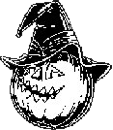Rificolona in Florence — Ona, Ona, Ona!
| Ona, Ona, Ona, O che bella Rificolona, La mia l’é coi fiocchi, La tua l’é coi pidocchi! |
(Ona, ona, ona, What a beautiful Rificolona, Mine with bows is tied, In yours, lice do reside!) |
 Florentine children sing this song as they wander through the streets of Florence the first week of September, carrying papier-mâché lanterns tied to the ends of sticks, called rificolone. There are several theories as to where the tradition originates from, some think it commemorates the triumphant entry of Florentine troops into Siena on August 2 1555, when the soldiers tied lanterns onto the ends of their pikes.
Florentine children sing this song as they wander through the streets of Florence the first week of September, carrying papier-mâché lanterns tied to the ends of sticks, called rificolone. There are several theories as to where the tradition originates from, some think it commemorates the triumphant entry of Florentine troops into Siena on August 2 1555, when the soldiers tied lanterns onto the ends of their pikes.
More probably the Festa della Rificolona grew out of the great autumn market held on September 7, the day before the Nativity of the Virgin, in Piazza Santissima Annunziata. It was probably the most important market-day of the year for the farmers as it was their last chance to earn money in preparation for the coming winter: In order to arrive early the inhabitants of the outlying regions would set off long before dawn and carry lanterns, made by suspending candles within tissue-paper wind-shades, to light their way. Entire families would come, dressed in their Sunday best, but they were ignorant country folk and their attempts at elegance only made the city people laugh in fact Florentines still call an overdressed, over made-up woman a rificolona. Children would blow whistles at them, and make their own lanterns with colored tissue paper to follow along, or shoot at the farmers’ lanterns with blowguns, in an attempt to knock over the candles and set the tissue paper ablaze.
The market still exists today in the form of a huge fair in Piazza Santissima Annunziata in early September; it was the first fair held by organic producers in Italy, and remains one of the most important, with wonderful foods and performers of all kinds. Florentine children still get out their lanterns in the beginning of September and there are parties in the squares, with street theater and music. The Festa della Rificolona closes with a procession on the night of the 7th, from Piazza Santa Croce to Piazza Santissima Annunziata, which is led by the Cardinal; he addresses the crowd, then there’s a final party in the streets until the early hours of the morning.
